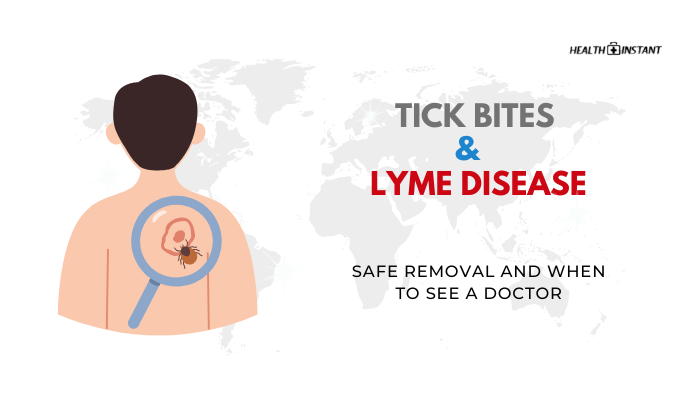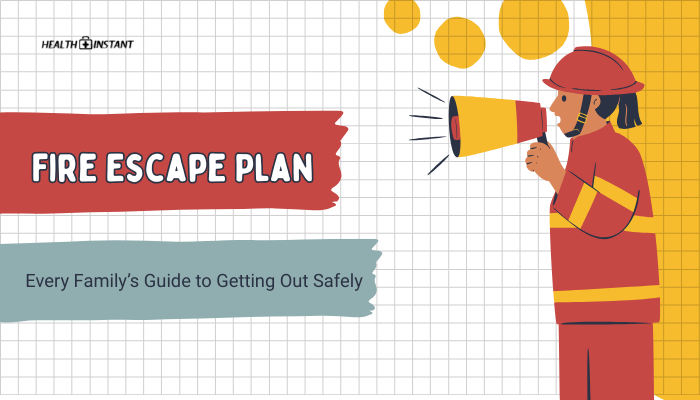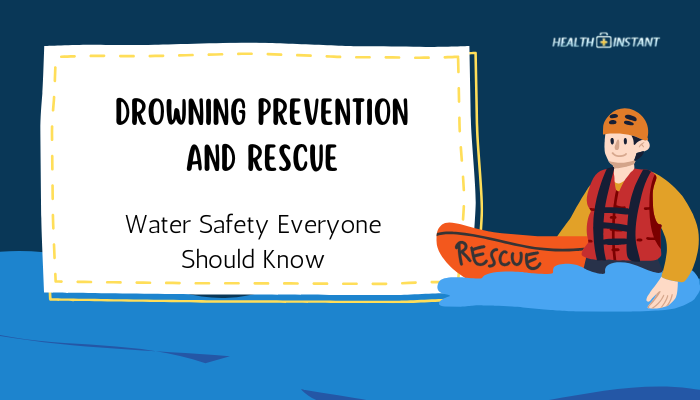Introduction
Outdoor adventures in wooded or grassy areas can come with a hidden threat: ticks. These small, blood-sucking arachnids occasionally carry illnesses like Lyme disease, which can have serious long-term impacts if untreated. Prompt, correct removal of attached ticks lowers the chance of infection, and monitoring for symptoms helps ensure early treatment if needed.
This guide outlines safe tick-removal steps, signs to watch for, and best practices for preventing tick bites in the first place.
Why Ticks and Lyme Disease Are a Concern
- Lyme Disease
- Commonly spread by black-legged (deer) ticks carrying the Borrelia burgdorferi bacterium.
- Commonly spread by black-legged (deer) ticks carrying the Borrelia burgdorferi bacterium.
- Other Tick-Borne Illnesses
- Anaplasmosis, babesiosis, Rocky Mountain spotted fever.
- Anaplasmosis, babesiosis, Rocky Mountain spotted fever.
- Geographical Spread
- Ticks are prevalent in North America, Europe, Asia, and various wooded, grassy habitats globally.
- Ticks are prevalent in North America, Europe, Asia, and various wooded, grassy habitats globally.
- Potential Complications
- Untreated Lyme may lead to joint pain, neurological issues, and cardiac symptoms.
Recognizing Lyme Disease and Other Tick-Borne Illnesses
- Early Localized Stage
- Erythema migrans (“bull’s-eye rash”) near the bite site, typically 3–30 days post-bite.
- Erythema migrans (“bull’s-eye rash”) near the bite site, typically 3–30 days post-bite.
- Flu-like Symptoms
- Fever, chills, fatigue, muscle aches.
- Fever, chills, fatigue, muscle aches.
- Later Stages
- If untreated, possible arthritis, facial palsy, or heart palpitations.
- If untreated, possible arthritis, facial palsy, or heart palpitations.
Not all infected individuals develop the bull’s-eye rash—thus, remain vigilant for any suspicious symptoms after a tick bite.
Safe Tick Removal Methods
Tools You’ll Need
- Fine-Tipped Tweezers
- Ideally ones designed for ticks, which help grip near the skin without squashing the tick’s body.
- Ideally ones designed for ticks, which help grip near the skin without squashing the tick’s body.
- Antiseptic
- Rubbing alcohol, iodine scrub, or soap and water to clean the area and your hands after removal.
- Rubbing alcohol, iodine scrub, or soap and water to clean the area and your hands after removal.
Step-by-Step Removal Process
- Grasp the Tick by the Head/Mouthparts
- Get as close to the skin’s surface as possible, not the tick’s engorged body.
- Get as close to the skin’s surface as possible, not the tick’s engorged body.
- Pull Upward with Steady Pressure
- Avoid jerking or twisting; doing so can leave mouthparts embedded.
- Avoid jerking or twisting; doing so can leave mouthparts embedded.
- Check
- Once removed, ensure no remnants remain in the skin.
- Once removed, ensure no remnants remain in the skin.
- Clean the Bite Area and Hands
- Use antiseptic on both the site and your tweezers.
- Use antiseptic on both the site and your tweezers.
What to Avoid
- No Heat, Oils, or Chemicals
- Folk methods like burning the tick, covering it with petroleum jelly, or using nail polish might cause the tick to regurgitate, increasing infection risk.
- Folk methods like burning the tick, covering it with petroleum jelly, or using nail polish might cause the tick to regurgitate, increasing infection risk.
- Don’t Squeeze the Body
- Pressing can push pathogens into the bite.
- Pressing can push pathogens into the bite.
Disposing or Saving the Tick for Identification
- Sealed Bag
- Some experts recommend sealing the tick in tape or a small container if identification or testing is desired.
- Some experts recommend sealing the tick in tape or a small container if identification or testing is desired.
- Label
- Mark the date and location of the bite on the container.
- Mark the date and location of the bite on the container.
- Dispose If Not Testing
- Flushing ticks down the toilet or placing them in rubbing alcohol kills them.
- Flushing ticks down the toilet or placing them in rubbing alcohol kills them.
When to See a Doctor
Signs of Infection or Lyme
- Expanding Rash
- A circular or expanding red area, possibly with a clear center.
- A circular or expanding red area, possibly with a clear center.
- Persistent Fever
- If you get flu-like symptoms days/weeks after the bite.
- If you get flu-like symptoms days/weeks after the bite.
- Joint or Muscle Pains
- Unusual swelling or pain in knees, shoulders, or large joints.
- Unusual swelling or pain in knees, shoulders, or large joints.
Prompt Medical Intervention
- Early Antibiotics
- Caught in early stages, Lyme responds well to antibiotic treatment, preventing severe complications.
- Caught in early stages, Lyme responds well to antibiotic treatment, preventing severe complications.
- Testing
- If recommended by your physician, blood tests for Borrelia burgdorferi or other tick-borne pathogens may confirm a diagnosis.
- If recommended by your physician, blood tests for Borrelia burgdorferi or other tick-borne pathogens may confirm a diagnosis.
Tips to Prevent Tick Bites
- Use Insect Repellent
- Products containing DEET or picaridin on skin; permethrin on clothing.
- Products containing DEET or picaridin on skin; permethrin on clothing.
- Wear Protective Clothing
- Long sleeves, pants tucked into socks, light-colored fabrics to spot ticks easily.
- Long sleeves, pants tucked into socks, light-colored fabrics to spot ticks easily.
- Avoid Tick-Infested Areas
- High grass, leaf piles; remain on trails in woods.
- High grass, leaf piles; remain on trails in woods.
- Perform Daily Tick Checks
- Inspect your body (especially behind knees, underarms, groin, scalp) after outdoor activity.
- Inspect your body (especially behind knees, underarms, groin, scalp) after outdoor activity.
Conclusion
Though tick bites are common in many regions, practicing vigilant preventive measures, removing ticks properly, and watching for any troubling signs ensures that tick-borne illnesses remain manageable. Quick, careful extraction of ticks from the skin, combined with early medical evaluation, can thwart conditions like Lyme disease.
By following these guidelines and taking note of local tick prevalence, you can enjoy the outdoors with greater peace of mind.
References
- Centers for Disease Control and Prevention (CDC). (2021). Tick removal and prevention.
- World Health Organization (WHO). (2020). Lyme disease factsheet.
- American Academy of Pediatrics (AAP). (2019). Managing tick bites in children.
- American College of Physicians (ACP). (2022). Antibiotic guidelines for tick-borne diseases.
Disclaimer: The steps offered here are general guidelines. For individualized treatment or detailed diagnoses, consult healthcare professionals immediately if you suspect any complications from a tick bite.






